- Château Dauzac practises highly sustainable viticulture, using organic fertilisers.
- Ecological control of cutworms has made it possible to avoid the use of insecticides.
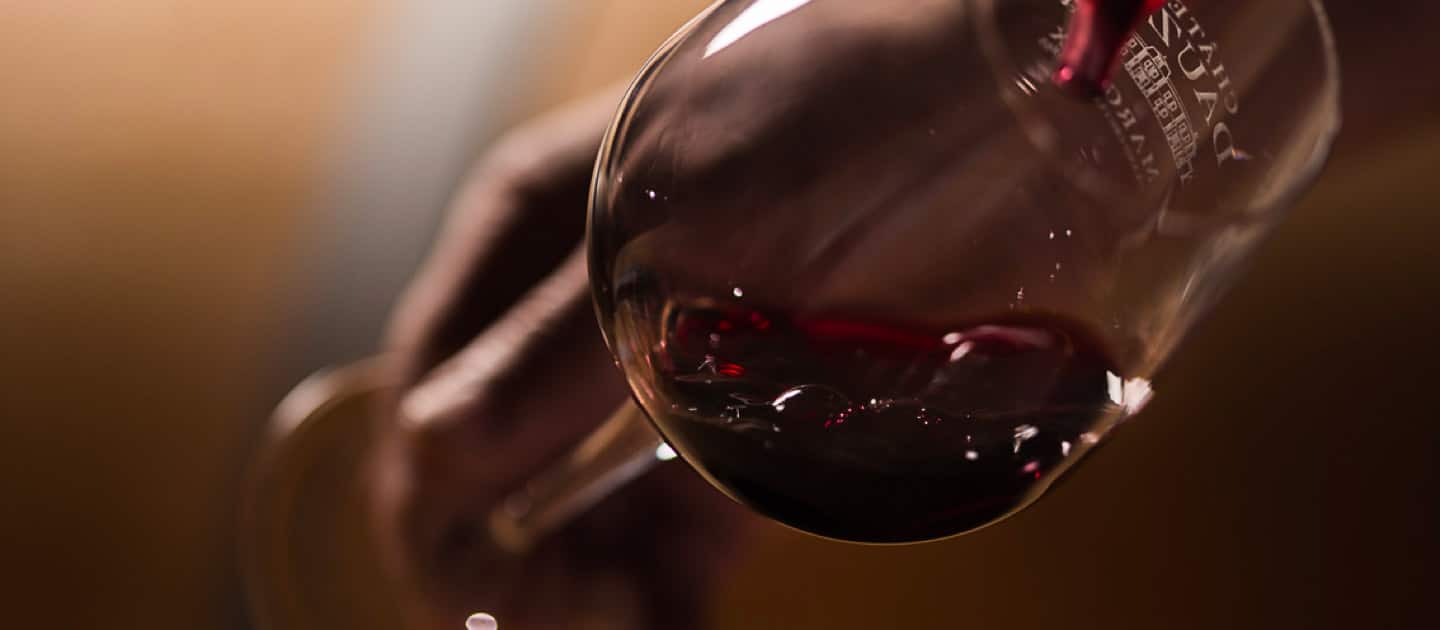
Know-how
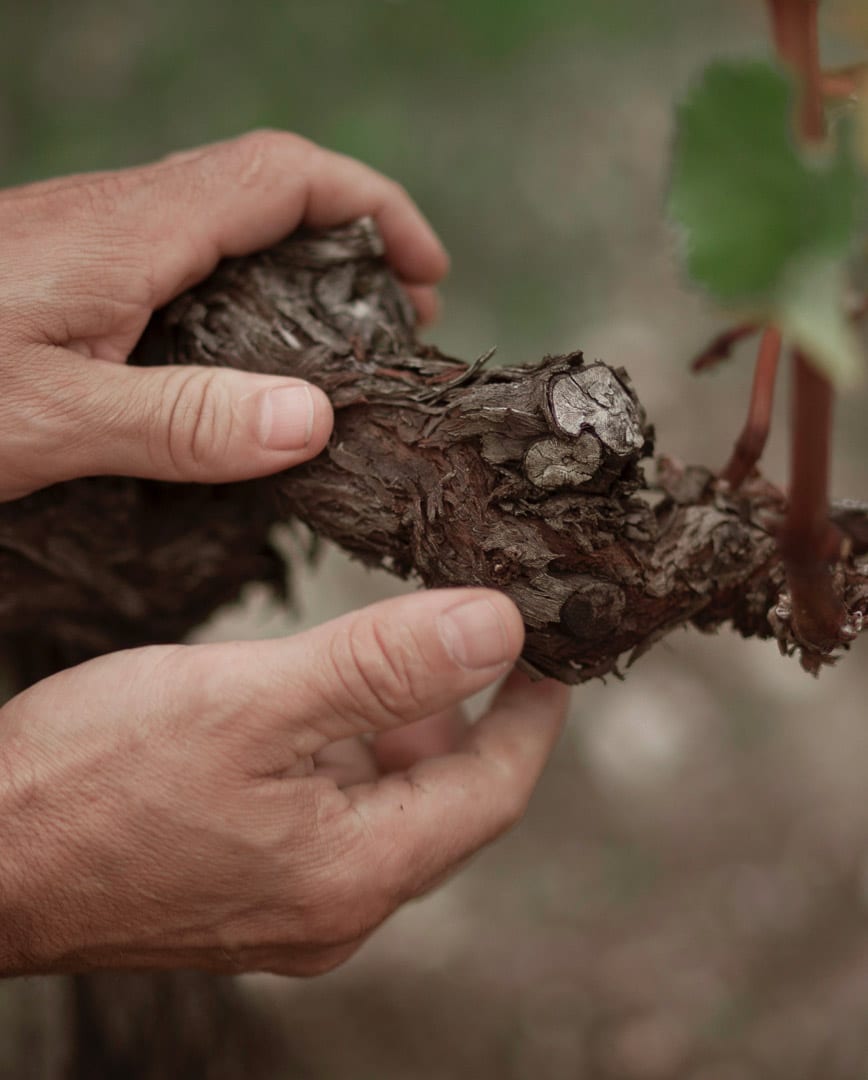
Ancestral know-how
Château Dauzac’s ambition is very clear: continue to progress among the best Médoc Grands Crus Classés.
To achieve this objective, the men and women of Dauzac are drawing on the estate’s very DNA: a deep-rooted respect for tradition and innovation, all the while making the most of the estate’s strength – its biodiversity, which is a valuable resource for the quality of the wine it produces. To showcase this DNA, Château Dauzac has had a distinctive emperor yellow label since 1924, a symbol of light and sensory experiences.
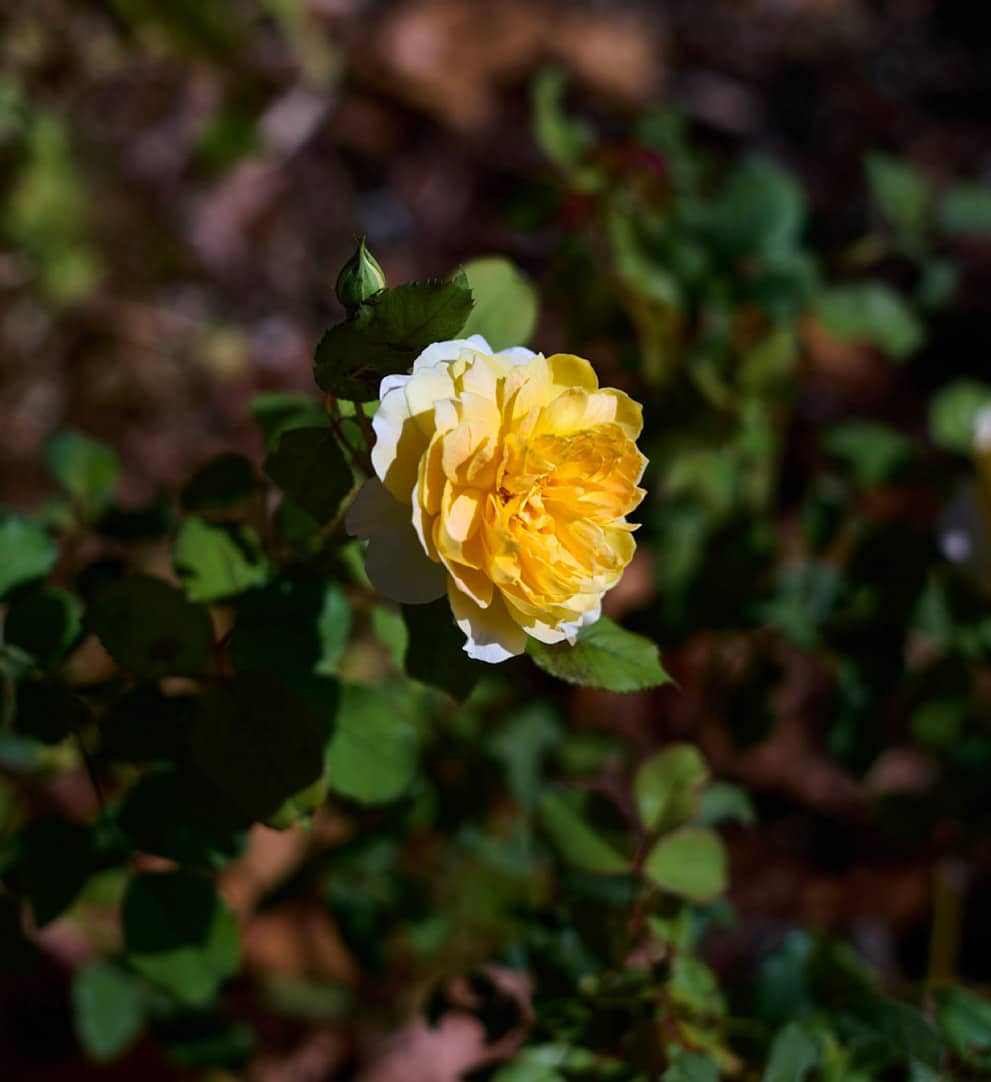
Virtuous viticulture
In keeping with the Médoc tradition, the vineyard, which has a plant density of 10,000 vines per hectare, is 69% Cabernet-Sauvignon, 29% Merlot and 2% Petit-Verdot. The work carried out over more than 30 years, as well as the implementation of new techniques, has enabled the vineyard to produce complex and high-quality grapes. Surveys, cross-sections at a depth of three metres and electrical resistivity tests have made it possible to identify homogenous plots and choose the correct grape varietal and rootstock, while managing each plot according to its needs and characteristics. Meteorological sensors on each terroir unit as well as a weather station help to make precise decisions about the work to be done.
For several years now, Château Dauzac has been moving towards the best of biodynamic viticulture:
- Some plots have been planted with grass in order to better regulate the water supply.
- Double Guyot pruning with disbudding is performed and a significant amount of ‘green’ work is carried out manually to ensure uniform ripeness.
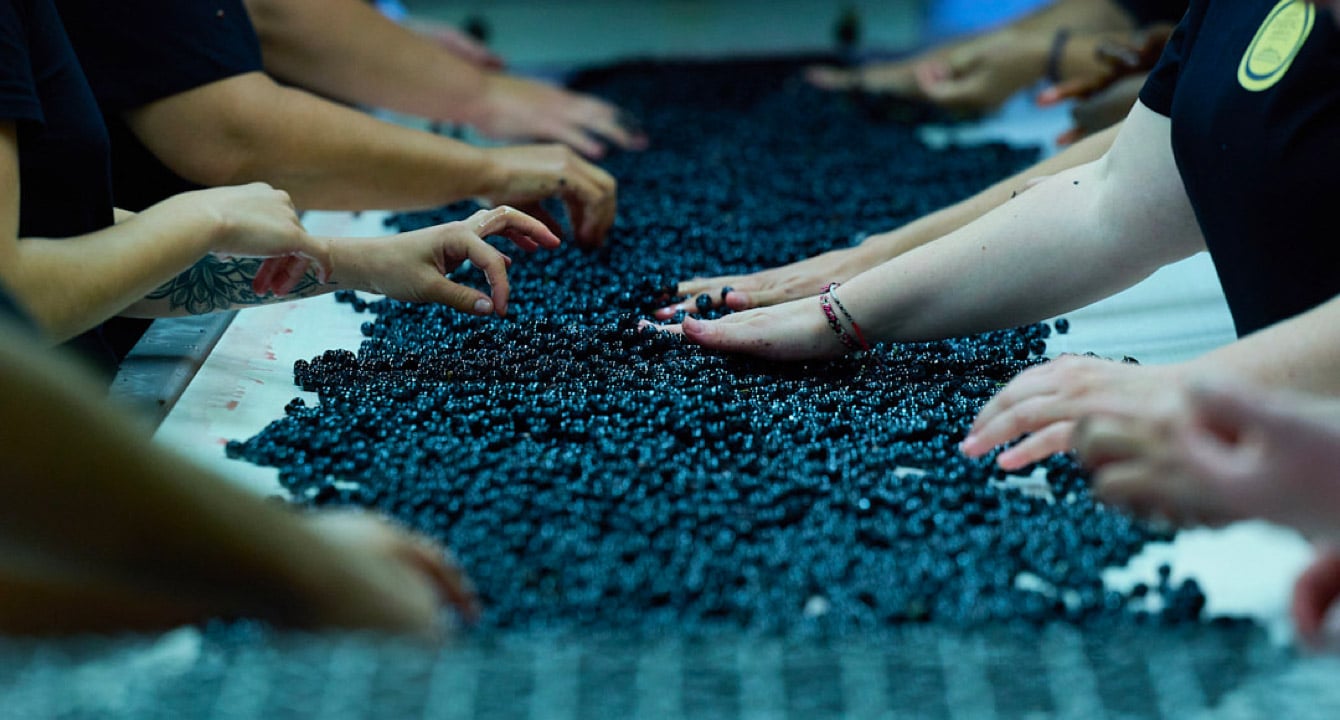
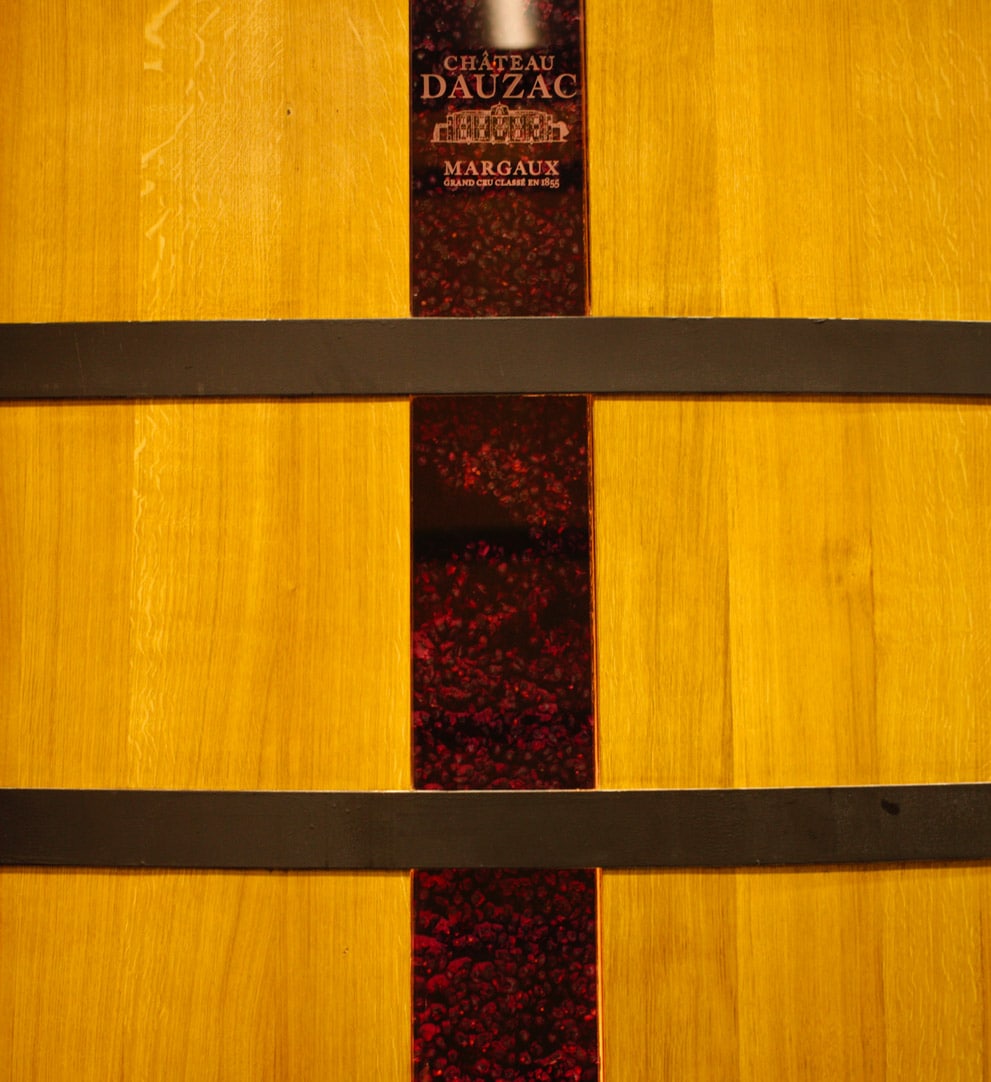
Meticulous vinification
For the harvesting process to respect the integrity of the fruit, it needs to be carried out manually. Each plot is vinified separately in thermoregulated vats to ensure the gentle and even extraction of tannins in the cap. Since 2014, the use of wooden vats with two transparent staves, designed by Seguin Moreau at Château Dauzac’s request, has enabled us to refine the vinification process, by rethinking our pumping-over method to avoid pumping the wines and thus optimise maceration.
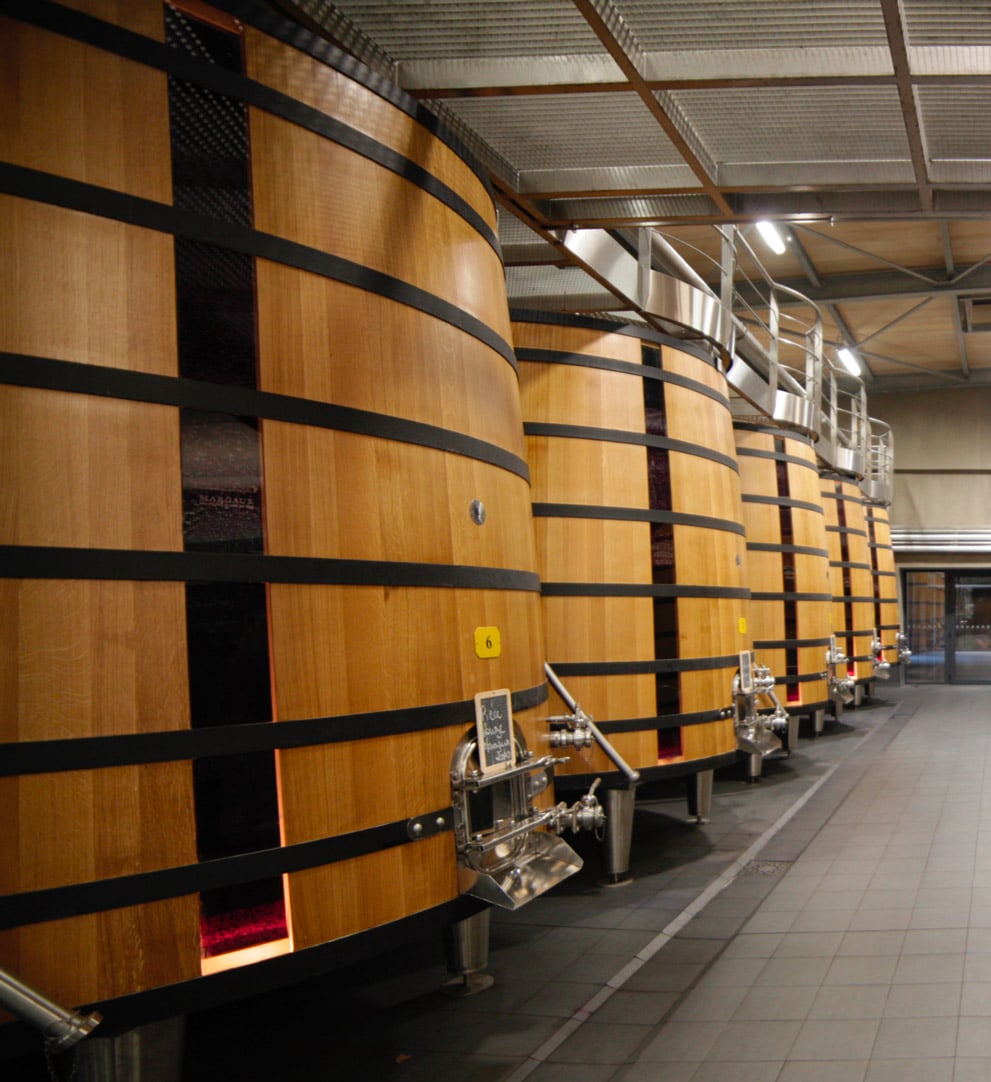
Each year, Château Dauzac carefully selects the wood its coopers will use to make the barrels; the wines are matured for 12 to 18 months in lightly-toasted extra-fine French-oak barrels, with approximately 60% new barrels to preserve the whole fruit and produce ‘vintage wines’. Eric Boissenot, an oenologist whose reputation and knowledge are well established, advises and assists with the harvest and blending process. Château Dauzac is the first 1855 Grand Cru Classé to produce 100% Vegan wines, since 2016, using vegetal proteins instead of the egg white traditionally used as a fining agent.
A technical director with strong commitments
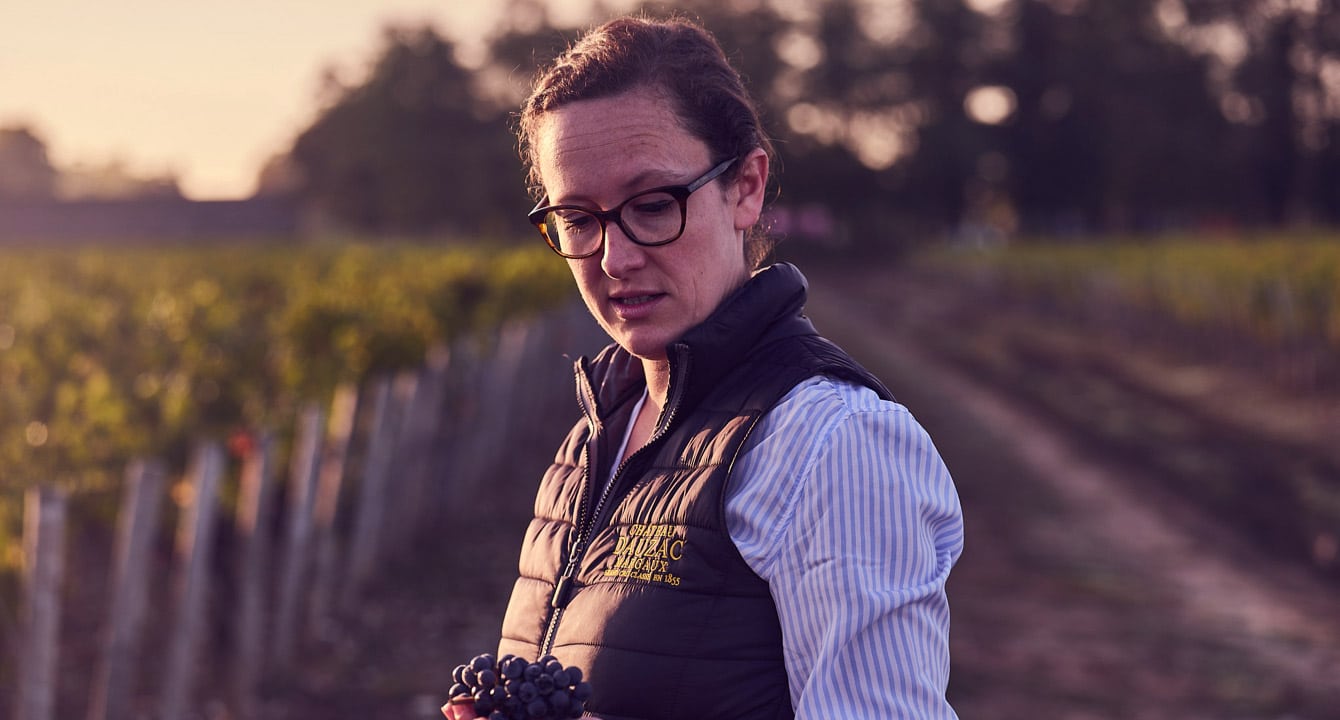
‘we just have to be as worthy as possible of this heritage that has been entrusted to us.’
Cécilia Trimaille, Technical Director at Château Dauzac
In January 2022, Cécilia Trimaille returned to the Margaux region, and was delighted to join the Château Dauzac team as Technical Director – ‘Bordeaux has always been a part of me, half of my family comes from the region, I came here on holiday as a child and when I worked at Château Margaux, I went past Dauzac every day, so we’ve come full circle!’
When asked about Château Dauzac, it’s the word ‘innovation’ that immediately springs to mind – ‘few Châteaux have innovated as much and for as long as Dauzac, they are constantly taking risks; we’ve never talked so much about ecology and nature, and some are only just doing something about it, but here we always have’ – and she emphasises that only 40% of the estate is devoted to vineyards, the rest gives free rein to a truly varied and healthy ecosystem. Her roadmap for this cru classé? Cécilia simply states – ‘I don’t want to leave my mark on Dauzac, that’s not my goal, we just have to be as worthy as possible of this heritage that has been entrusted to us’.
